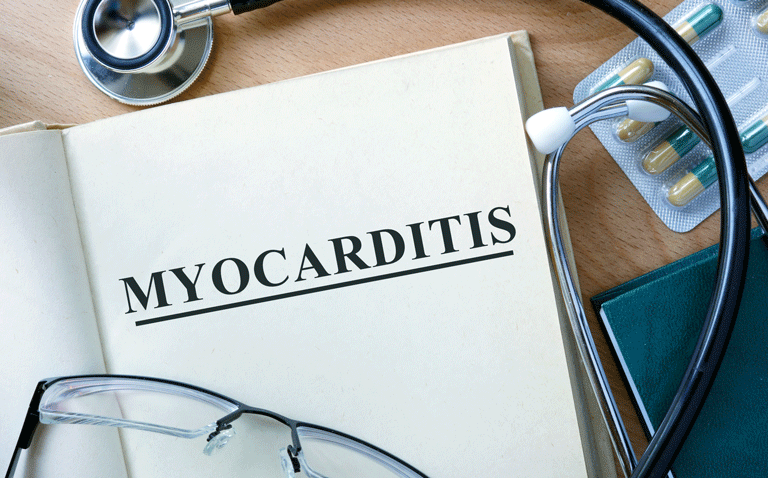Although the myocarditis rate after mRNA vaccination is low these rates appear to higher in those aged 18 – 30 compared to older adults
The overall myocarditis rate following a mRNA vaccination for COVID-19 is generally low but is higher than expected among those aged 12 to 29 years of age according to the findings of a post-marketing observational study by Canadian researchers.
Although there has been a huge uptake of COVID-19 vaccines, hesitancy remains a significant challenge with acceptance rates ranging from 53.6 to 84.4%. In fact, a US survey of 5,088,772 individuals identified that almost half (49.2%) of vaccine hesitant respondents reported fear of side effects. One such adverse effect following vaccination and which was not identified during the clinical trials was myocarditis with one US surveillance study concluding that the risk of myocarditis after receiving mRNA-based COVID-19 vaccines was increased across multiple age and sex strata and highest after the second vaccination dose in adolescent males and young men. However, little is known about the incidence of the condition following a third vaccination dose and this was the subject of the current study in which the Canadian team compared the myocarditis rate after a first, second and third dose compared to the background or expected rate.
The team used an integrated COVID-19 surveillance platform which contained all COVID-19-related data including infections and hospital or intensive care admissions. They focused on individuals aged 12 years and older and set the primary outcome as hospital admission or an emergency department visit for myocarditis.
Myocarditis rate and mRNA vaccination
During the study period (December 2020 to March 2022), a total of 1,025,385 doses of an mRNA vaccine (mRNA-1273 and BNT162b) were administered.
A total of 99 incident cases of myocarditis were identified within 7 days of vaccination, giving a rate per 100,000 of 0.97 (95% CI 0.78 – 1.17). The expected rate was 0.13 (95% CI 0.06 – 0.28) so that the observed:expected (OE) ratio was 14.81. The observed rate was higher in males than females (1.64 vs 0.35) and occurred in younger men (median age males = 28 vs median age females = 45).
Within 21 days following vaccination, there were 141 cases of myocarditis with an OE ratio of 7.03 (95% CI 5.92 – 8.29). As with the 7-day risk period, the 21-day incidence rate was higher in men than women (2.15 vs 0.67). In fact, when researchers looked at the incidence rate across different ages, the rates were much higher among those aged 12 – 29. For example, the incidence rate was 2.95 (ages 12 – 17) and 2.97 (ages 18 – 29) compared to 0.77 (ages 50 – 59) and 0.71 (ages 60 – 69).
Interestingly, the incidence myocarditis in both the 7 and 21-day post-vaccination periods reduced after the second dose. For example, the incidence rate during the first 7 days after the first vaccination was 0.18, 1.90 after the second dose but 0.76 after the third dose.
When comparing vaccines, there was a much higher rate of myocarditis following mRNA-1273 compared to BNT162b (1.44 vs 0.74). In addition, the incidence rate was highest among males aged 18 – 29 after the second dose (22.97 vs 5.84, mRNA vs BNT162b).
The authors concluded that although absolute rates of myocarditis were low, their findings support the preferential use of the BNT162b2 vaccine over the mRNA-1273 vaccine for people aged 18-29 years.
Citation
Naveed Z et al. Observed versus expected rates of myocarditis after SARS-CoV-2 vaccination: a population-based cohort study. CMAJ 2022










